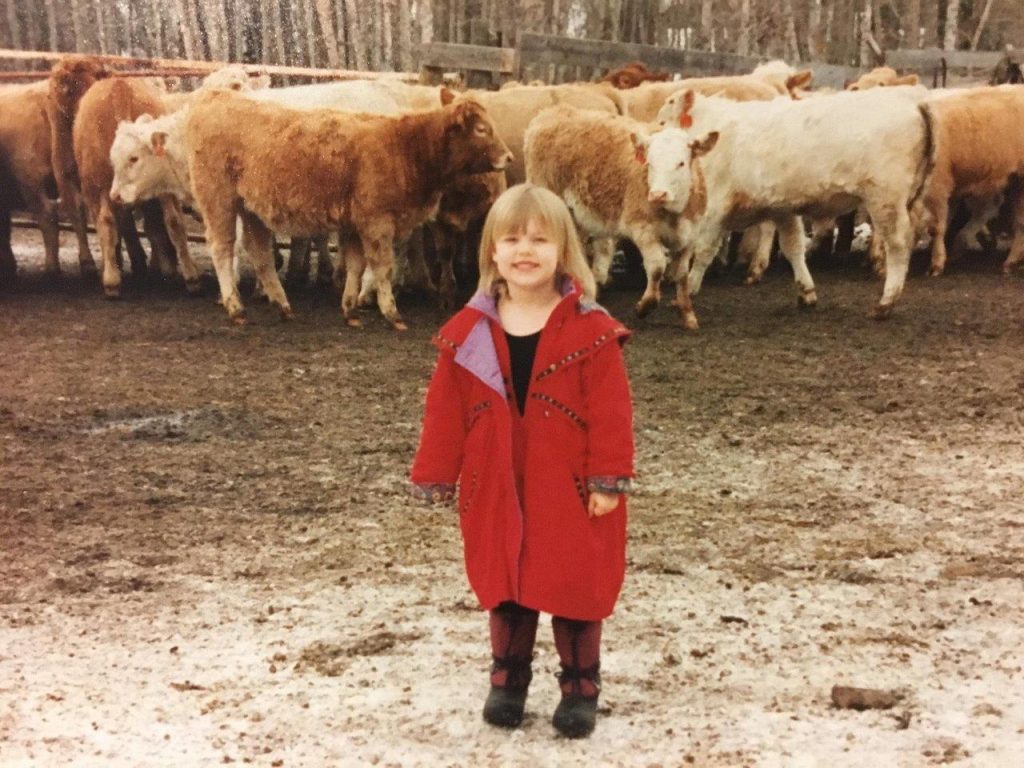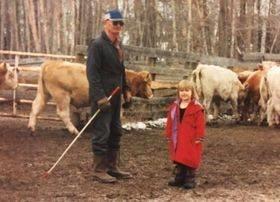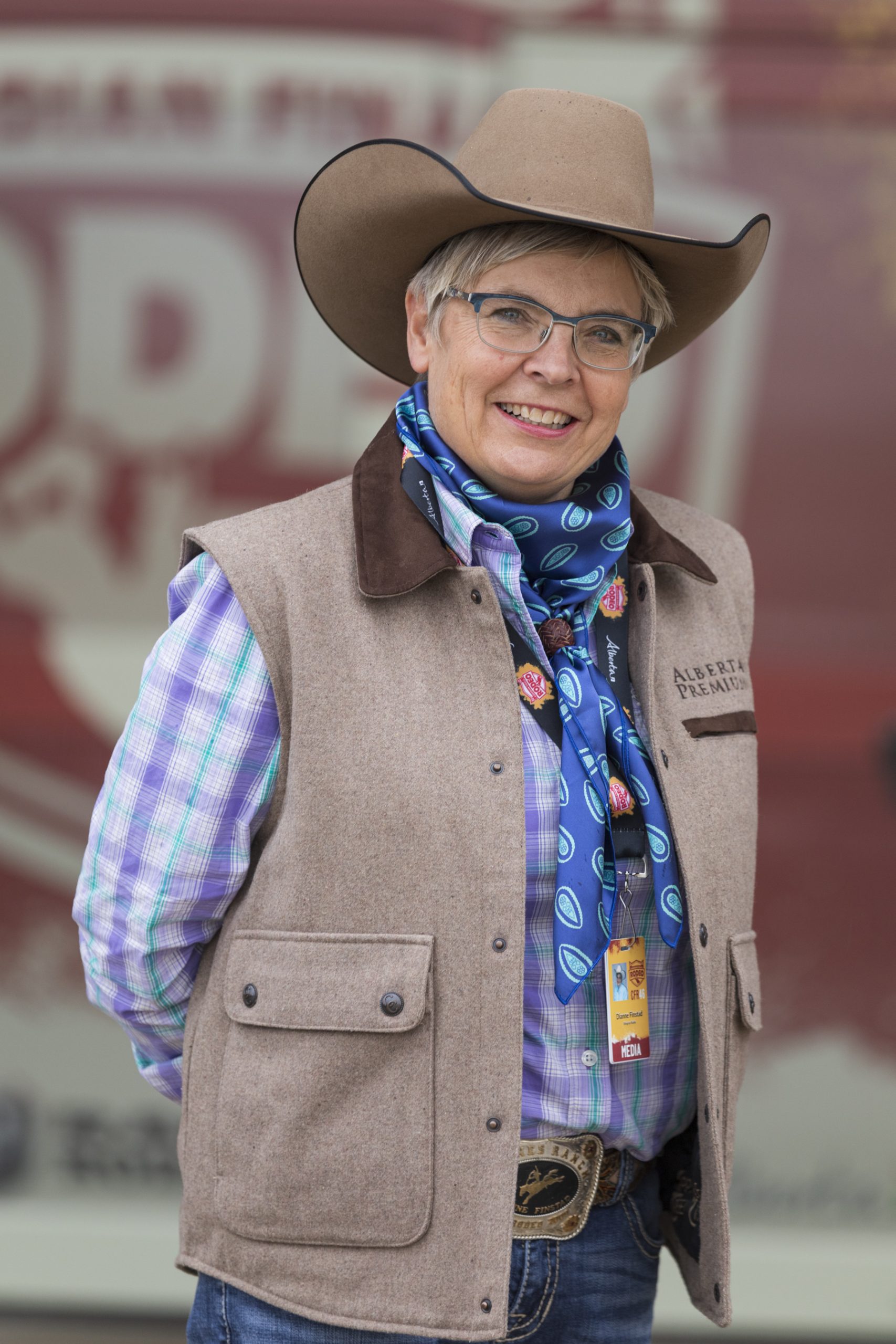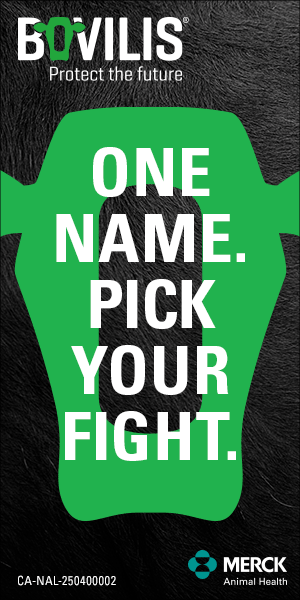AB Direct - Steers
Rail: 495.75-501.50 FOB feedlot (last week)
AB Direct - Heifers
Rail: 495.75-501.50 FOB feedlot (last week)
US Trade- Steers
Rail: 365.00-368.00 (NE, IA) last week
US Trade - Heifers
Rail: 365.00-368.00 (NE, IA) last week
Canadian Dollar
0.27
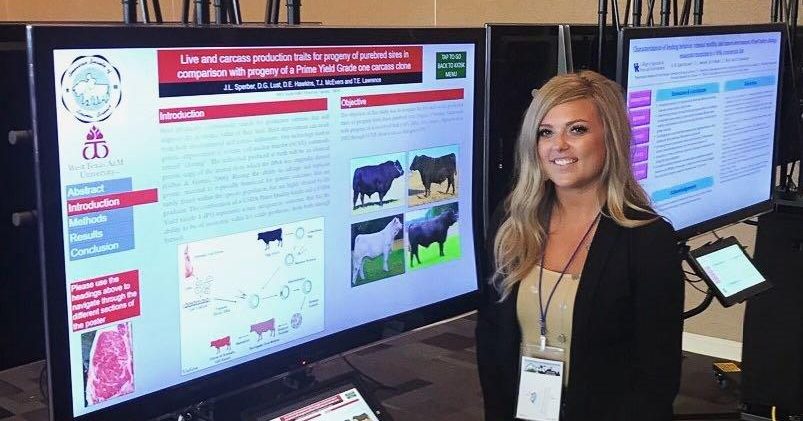
Igniting the future of agriculture – Jessica Sperber
Editor’s Note: This is the first part of a two-part series that was originally published together in ABP, the magazine. Please stay tuned for the second part, featuring David MacTaggart.
If you ever need to rejuvenate your enthusiasm for being in the beef industry, spend a little time with young people like these two Albertans. They’re out there – outstanding leaders excited for a future in agriculture. They expand our minds beyond traditional career thinking as they discover new and interesting ways of playing a role in today’s complex, data driven and multifaceted journey from the pasture to the palate. And hang on…their passion is contagious!
Jessica Sperber
Who knows what interests can be ignited when kids tag along on farm chores? Jessica Sperber has some favourite photos of her childhood days where her pint-sized self is wearing a big grin, standing smack dab in the middle of a pen of fed steers with her grandpa.
These days, the pure joy is just as evident as she collects data on a pen of steers at a research barn in Lincoln, NE where she’s working on her PhD in ruminant nutrition.
Sperber is a prime example of a generation eager to make their mark, while learning about the beef business and ways to make it even better for the future – a spark ignited early.
“When we were like one year old, we did everything on the farm – riding in the combine, working with the cows,” she recalls.
Growing up on a fourth-generation commercial cow-calf and grain operation just west of Ponoka, Sperber joined her older sister in the local 4-H club as soon as she could, taking advantage of pretty much every position and learning opportunity the program could provide, building a cattle herd of her own along the way.
Sperber opted to follow her sister’s footsteps to MacEwan University in Edmonton to start her post secondary career, studying biology. While it may not be a typical start to a doctorate in the livestock field, the science background it gave her, as well as the many connections from her active student community work, helped springboard her next steps.
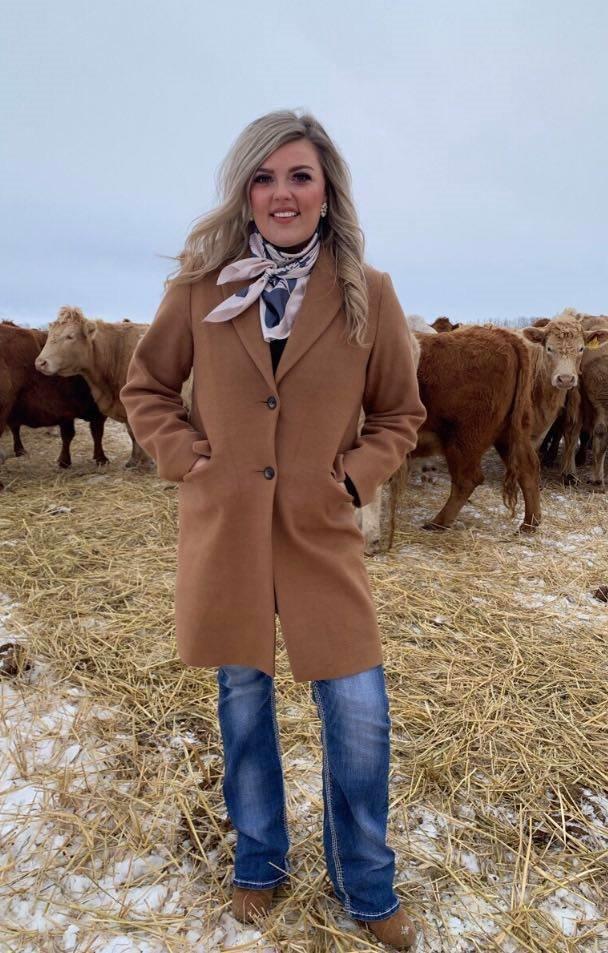
Her farm interests were never far from her mind, as she challenged her professors’ experience realm when she explored cattle connections to her various assignments, like doing presentations on cattle egrets or beef tapeworms for her zoology classes.
Graduate studies were on her mind, and that’s when the redirect to animal science began in earnest.
“I had a really, really close friend pass away, and I think that was kind of an eye-opener. I just decided I needed to do what I wanted to do,” says Sperber.
Becoming a semi-finalist for the Cattlemen’s Young Leaders (CYL) program provided a key path. During the interview process, she got visiting with fellow candidate Kurtis Reid about her master’s quest. He enthusiastically told her she needed to go to Texas to learn from the ‘coolest professor ever’.
“The next day the professor, Ty Lawrence, calls me while I was at the beef conference,” says Sperber.
Reid had given him the lowdown on Sperber, and it truly was a fit. She was soon off to West Texas A&M University for a master’s in meat science.
She was also chosen at CYL and began a mentorship with Saskatchewan Cattlemen’s Association CEO Ryder Lee – an experience that expanded her horizons.
While in Snyder, TX, Sperber worked with the university’s Beef Collector’s Research Center, which entailed visiting over 20 different packing plants across the U.S.
“Cattle are carbon sequesters – a lot of them have negative methane production because they are doing that much, eating plants that no other animal in the world can eat.”
“It was incredible exposure to the industry, and very good for data collection and research techniques.
“I saw a lot of different cattle in a lot of different states. You just don’t realize just how different beef production in the pacific northwest in the U.S. is from the south, versus the midwest.
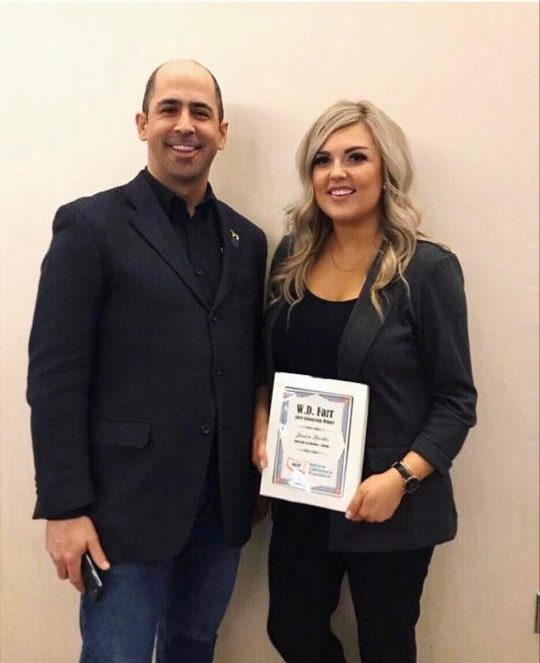
“Ty’s research program gave me my passion for the carcass industry. I have a huge interest in the feeder packer relationship. It made me have a whole new appreciation for the packing industry, and want to then do feedlot nutrition for my PhD.”
Diversifying her work again, Sperber plugged into ruminant nutrition research efforts at the University of Nebraska in Lincoln, working with professors Galen Erickson and Andrea Watson, focusing on sustainability efforts in cattle feeding.
“Essentially all my research has been on how can we improve our environmental impact. Cattle are carbon sequesters – a lot of them have negative methane production because they are doing that much, eating plants that no other animal in the world can eat. Then they use it as an energy product, ruminate with it, defecate it back into the soil for nutrients – like literally, they are so incredible!”
Sperber is hoping to be able to wrap up her doctorate work and graduate before the end of the year. Because of the nature of her studies, it’s been considered essential work, and she’s been able to continue her research despite the pandemic. But she has missed networking opportunities through conferences and events, as she looks to begin a career in the industry, hopefully somewhere in the feeder-packer realm.
In the meantime, she’s busy serving as Vice-President of the Young Cattlemen’s Council in Canada, and is also giving back to the CYL program by sitting on the Selections Committee. “I’m very thankful for CYL.”
“I think maybe what the beef industry was missing was this driven passion for what people are doing. In my generation, that’s a big thing – find your passion and chase it. I see it all the time, through the CYL candidates and it makes me so pumped. I just think there’s a lot more opportunity for young people nowadays, which makes me excited for the future of the beef industry.”
This is a portion of an article first published in the May 2021 edition of ABP Magazine. Stay tuned to ABP Daily to see Part II, along with more content from the magazine.

